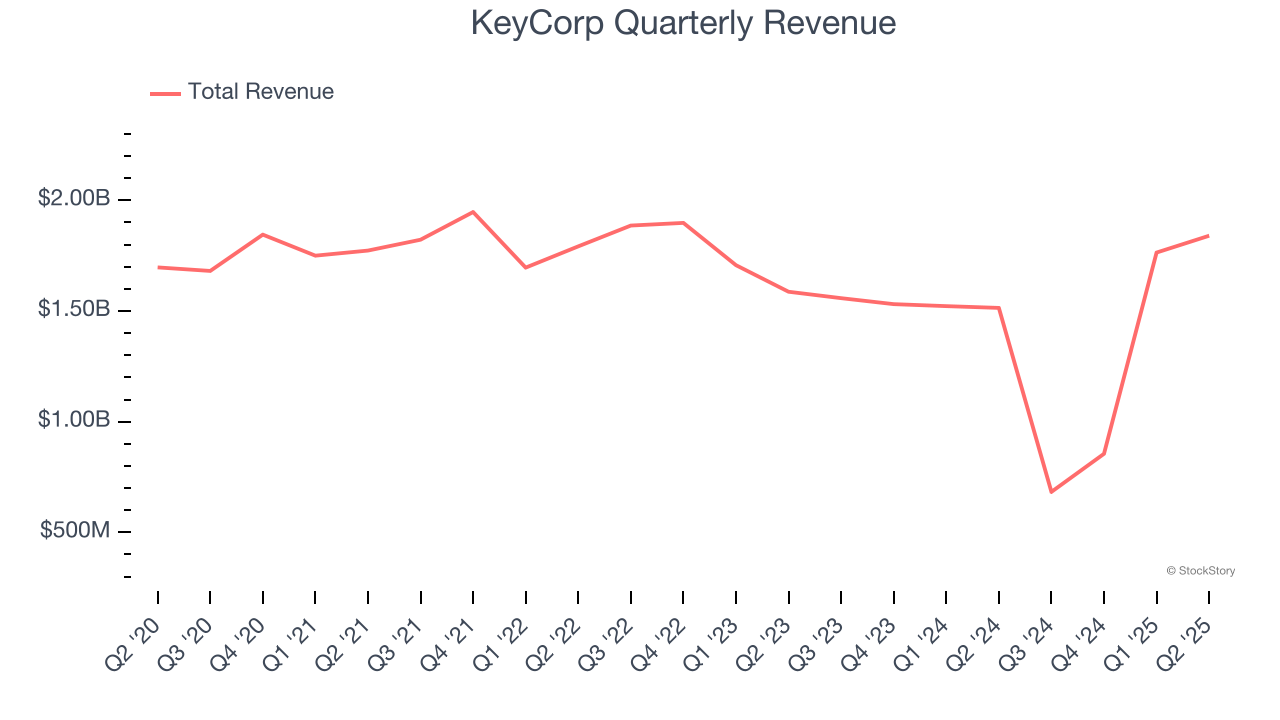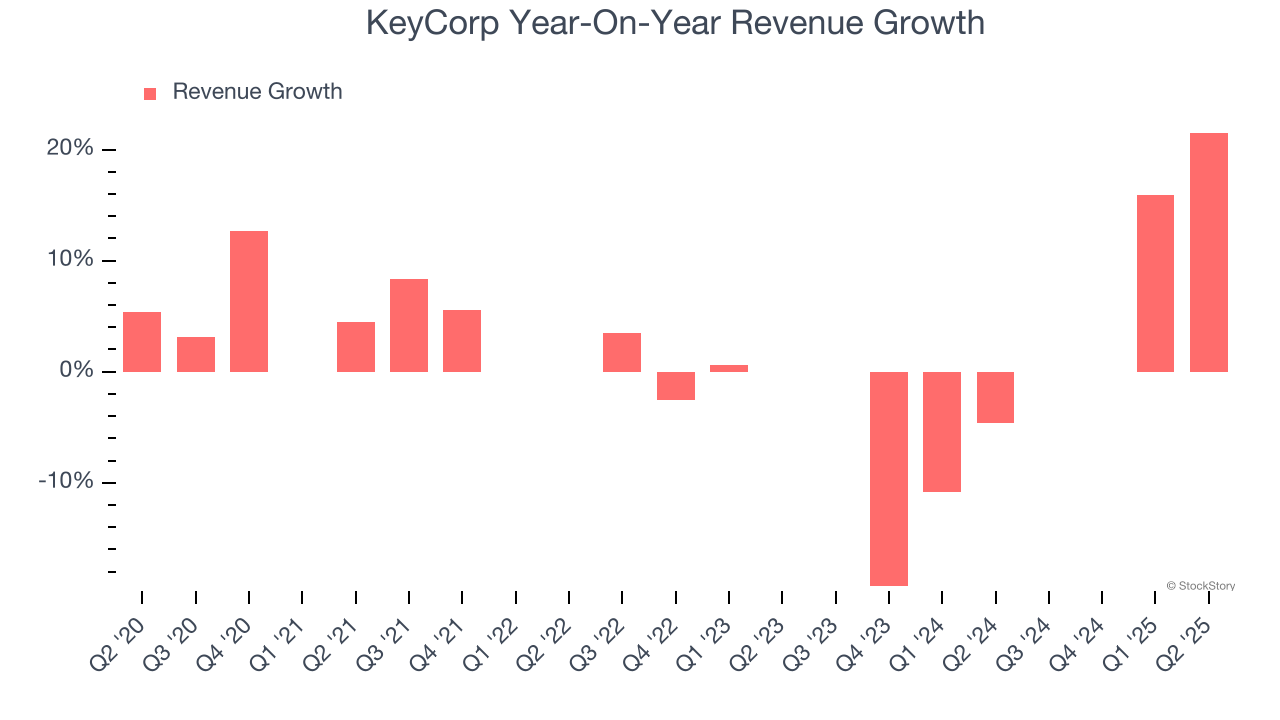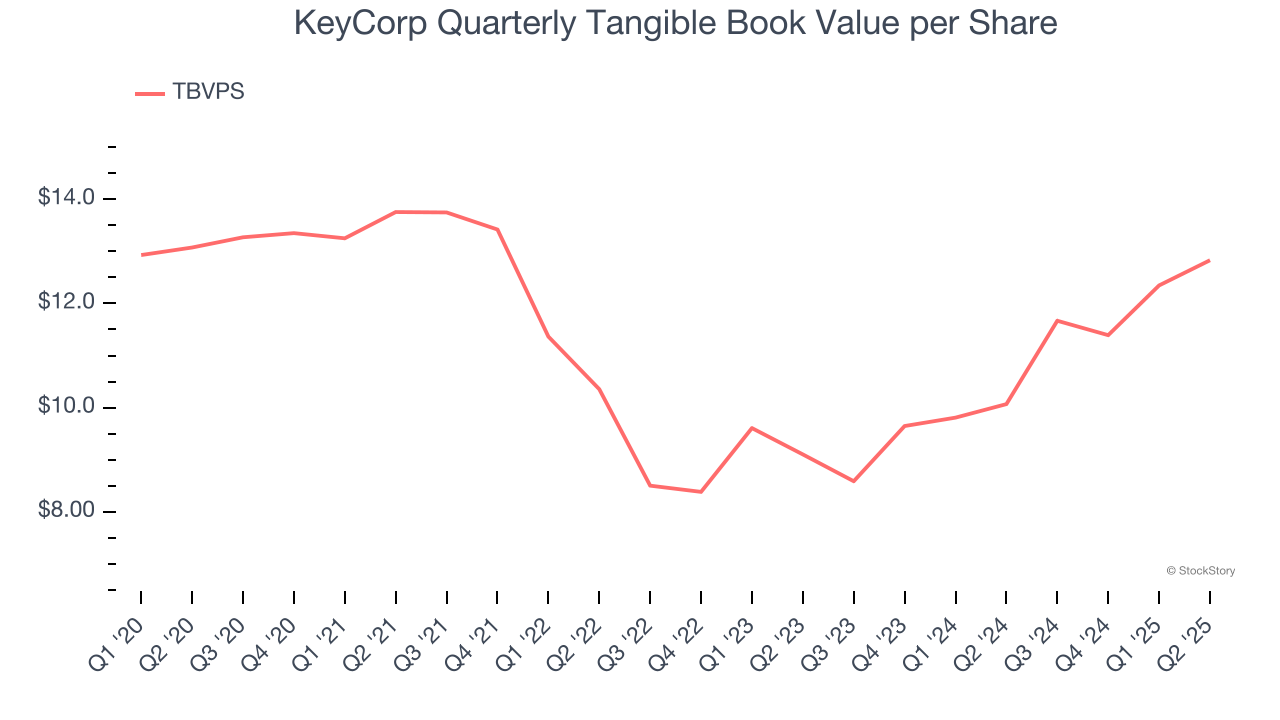
Regional banking company KeyCorp (NYSE:KEY) reported revenue ahead of Wall Street’s expectations in Q2 CY2025, with sales up 21.5% year on year to $1.84 billion. Its GAAP profit of $0.35 per share was in line with analysts’ consensus estimates.
Is now the time to buy KeyCorp? Find out by accessing our full research report, it’s free.
KeyCorp (KEY) Q2 CY2025 Highlights:
- Net Interest Income: $1.15 billion vs analyst estimates of $1.14 billion (29.7% year-on-year growth, 1.2% beat)
- Net Interest Margin: 2.7% vs analyst estimates of 2.7% (62 basis point year-on-year increase, in line)
- Revenue: $1.84 billion vs analyst estimates of $1.80 billion (21.5% year-on-year growth, 2% beat)
- Efficiency Ratio: 62.4% vs analyst estimates of 63.7% (1.3 percentage point beat)
- EPS (GAAP): $0.35 vs analyst estimates of $0.35 (in line)
- Market Capitalization: $20.03 billion
Company Overview
Tracing its roots back to 1849 during the California Gold Rush era, KeyCorp (NYSE:KEY) operates KeyBank, a full-service regional bank providing retail and commercial banking, wealth management, and investment services across 15 states.
Sales Growth
Two primary revenue streams drive bank earnings. While net interest income, which is earned by charging higher rates on loans than paid on deposits, forms the foundation, fee-based services across banking, credit, wealth management, and trading operations provide additional income.
KeyCorp struggled to consistently generate demand over the last five years as its revenue dropped at a 4.7% annual rate. This was below our standards and suggests it’s a lower quality business.

We at StockStory place the most emphasis on long-term growth, but within financials, a half-decade historical view may miss recent interest rate changes, market returns, and industry trends. KeyCorp’s recent performance shows its demand remained suppressed as its revenue has declined by 14.8% annually over the last two years.

Note: Quarters not shown were determined to be outliers, impacted by outsized investment gains/losses that are not indicative of the recurring fundamentals of the business.
This quarter, KeyCorp reported robust year-on-year revenue growth of 21.5%, and its $1.84 billion of revenue topped Wall Street estimates by 2%.
Net interest income made up 66.8% of the company’s total revenue during the last five years, meaning lending operations are KeyCorp’s largest source of revenue.
Markets consistently prioritize net interest income growth over fee-based revenue, recognizing its superior quality and recurring nature compared to the more unpredictable non-interest income streams.
Unless you’ve been living under a rock, it should be obvious by now that generative AI is going to have a huge impact on how large corporations do business. While Nvidia and AMD are trading close to all-time highs, we prefer a lesser-known (but still profitable) stock benefiting from the rise of AI. Click here to access our free report one of our favorites growth stories.
Tangible Book Value Per Share (TBVPS)
Banks profit by intermediating between depositors and borrowers, making them fundamentally balance sheet-driven enterprises. Market participants emphasize balance sheet quality and sustained book value growth when evaluating these institutions.
Because of this, tangible book value per share (TBVPS) emerges as the critical performance benchmark. By excluding intangible assets with uncertain liquidation values, this metric captures real, liquid net worth per share. Traditional metrics like EPS are helpful but face distortion from M&A activity and loan loss accounting rules.
KeyCorp’s TBVPS was flat over the last five years. However, TBVPS growth has accelerated recently, growing by 18.7% annually over the last two years from $9.10 to $12.83 per share.

Over the next 12 months, Consensus estimates call for KeyCorp’s TBVPS to grow by 6.1% to $13.62, mediocre growth rate.
Key Takeaways from KeyCorp’s Q2 Results
It was encouraging to see KeyCorp beat analysts’ revenue expectations this quarter. We were also happy its net interest income narrowly outperformed Wall Street’s estimates. On the other hand, its EPS was in line. Zooming out, we think this was a mixed quarter. The stock remained flat at $18.40 immediately following the results.
Should you buy the stock or not? When making that decision, it’s important to consider its valuation, business qualities, as well as what has happened in the latest quarter. We cover that in our actionable full research report which you can read here, it’s free.
